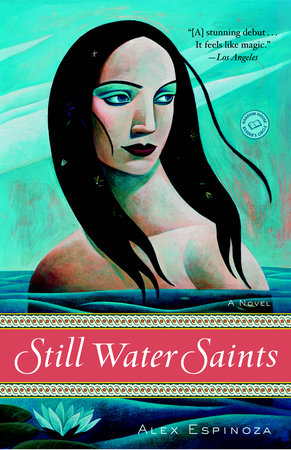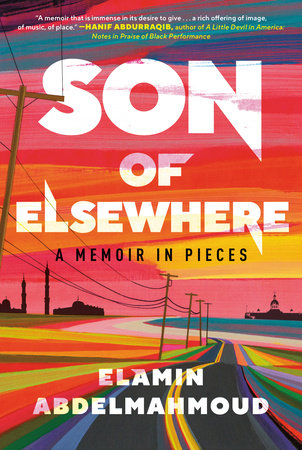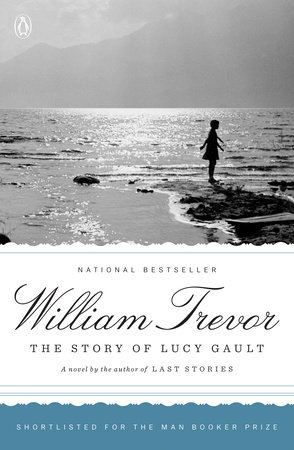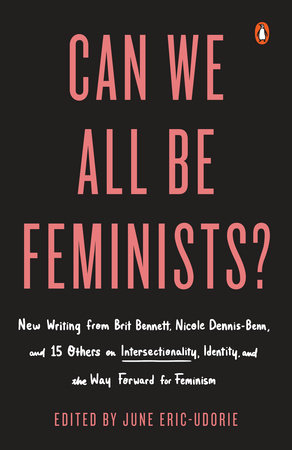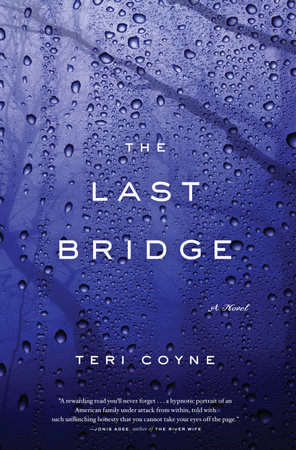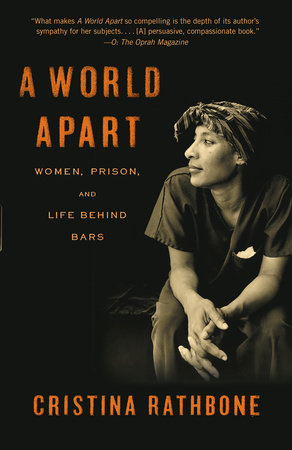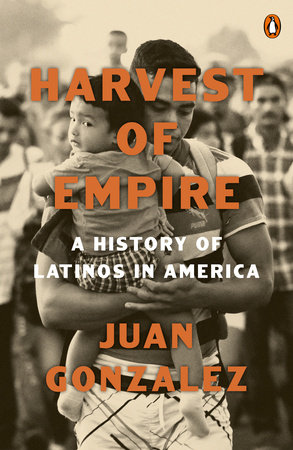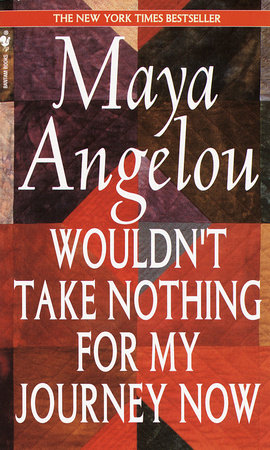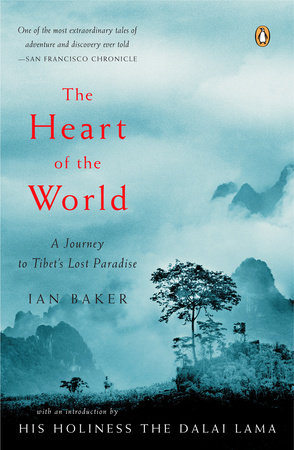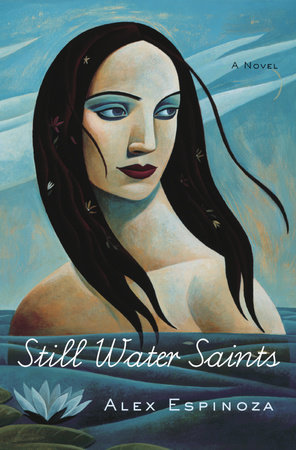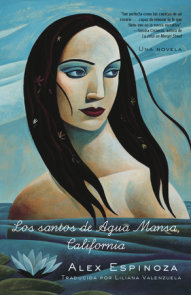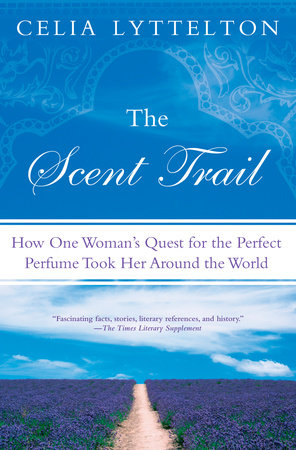Author Q&A
A Conversation with Alex Espinoza
Random House Reader’s Circle: Tell us a little bit about your writing process. Do you have a specific place where you write? A specific time of day when you write?
Alex Espinoza: With a first draft, I aim for a thousand words a day, and I do very little editing. When that first draft is done, though, that’s when the heavy lifting begins, and then I’ll spend hours working over that first draft, rewriting, restructuring, rethinking, revising, and polishing. I’ll edit like this a few times. With Still Water Saints, there were characters who saw their roles diminished or who vanished entirely during the editing process, and others who took on more significant roles or who appeared for the first time in a later draft. There were places and events that were emphasized differently.
As to when and where I write, I wrote the initial draft of Still Water Saints largely late at night, because that’s when I could find quiet. While I’m writing, I can’t have any distractions–no music, no phone, no television. I have an area by my desk I refer to as my altar decorated with photos, mementos from trips to various places, relics from my childhood, gift from friends. It’s a fairly eclectic collection–there are some sugar skulls, pictures of a trip to Mexico, a few seven-day candles, a model of Stockholm’s City Hall, a carved wooden duck from Michoac‡n, and a Batman Pez dispenser, among other things. Over the years, I’ve grown accustomed to writing directly on my computer, rather than with pen and paper. I’m using the same method for my second novel. But with another project I’m working on at the same time, which looks to be developing into my third novel, I’ve gone back to writing longhand, in a notebook, to help me keep the two projects separate. I’ll be interested to see if this has any effect on my process.
RHRC: Where did you get the inspiration to write Still Water Saints? What came to you first–the characters, the bot‡nica, the town of Agua Mansa, or something else entirely?
AE: When I was taking writing classes as an undergraduate and it was time to start thinking about a senior thesis, I was casting around for something to write about. I thought about writing a series of stories based on the weird folk remedies my mother, who grew up in a rural part of Mexico, would subject us to as children. The traditions fascinated me. For example, she would heat tomatoes, mash them up, place them in rags, and wrap them around our feet at night as a cure for tonsillitis. But I didn’t know where the stories would be set. Around that same time, I started visiting a bot‡nica in a strip mall near my mother’s home in Colton, California. I’m not quite sure why I first went there, but I quickly became a bit obsessed with the place. I’d go there and roam the aisles, taking in all the sights and smells, overhearing customers who came in and told the owner about their most personal problems–infidelity, unemployment, sickness. The customers would end up with some sort of suggested treatment, sometimes combining an herbal remedy (a tea, for example) with something else–a candle, a prayer card, a medallion–to treat the more spiritual or psychological element of their problem.
I’d worked retail jobs for many years. In fact, at the time I started this book, I was an assistant manager at a store in a local mall. I noticed that while what was being sold in the bot‡nica was quite different than anything I’d ever sold, I could recognize the patterns and relationships. There were the regular customers, whose lives and needs were well known to the shop owner. There were people who would come in knowing exactly what they wanted or needed, who weren’t at all interested in the opinions of the shop owner, but who would still find themselves drawn into conversation, sometimes buying a little something extra. And there were people who came in genuinely seeking the advice of the people in the shop. There was a kind of intimacy there in the bot‡nica, and I saw then that this was a way to combine the folk remedies and traditions I had initially been drawn to with the more modern and commercial world that I was familiar with. Only once I’d found the bot‡nica did the rest of the community and the people who lived in it begin to coalesce.
RHRC: Your novel has so many different characters with their own distinct viewpoints and personalities. How did you go about creating your characters? And was it difficult to write from several different perspectives? Do you have a favorite character?
AE: One of the things I have always admired about Sherwood Anderson’s Winesburg, Ohio is how in it Anderson provides multiple views of a single place through the lives of the people who live there. With Still Water Saints, I tried to invert that approach, so instead of one narrator’s view of the many people who inhabit a place, there is instead a range of people, each giving us a unique view of one community. Because I was trying to depict a complex and varied community, I wanted to populate it with characters who encompassed a range of ages, classes, ethnicities, genders, and occupations. I was determined to have no two voices sound exactly alike, no two chapters hit the same emotional pitch. A lot of those voices were exercises, attempts to stretch myself as a writer. I’ve always enjoyed writing from the perspectives of characters who are wildly different from myself, whose lives are nothing like my own. I welcomed the challenge of writing from the perspective of a teenaged girl, then a drag queen, then a white, twenty-something man, and seeing just how much I could get away with, how far I could push the story, how deep into the character I could sink.
During the initial draft, each first-person chapter was, for the most part, self-contained; that is, I wrote each one as if I was writing a story from beginning to end. When I went back to edit the work as a whole, it was much harder, because of the tones and emotional shifts between the characters. It was a bit like having muliple personalities, living with a chorus of voices swirling about in my head.
There are many characters I’d like to revisit because I feel their stories aren’t quite done. Shawn was one of the most fun to write. He kept me guessing. At times, I felt I didn’t know from scene to scene what he was going to say, what kind of trouble he was going to get into.
RHRC:Why did you decide to set your novel in a fictional city? How does Agua Mansa reflect a typical Southern California town? In what ways does the novel challenge traditional views of Southern California?
AE: I decided to create a fictional city, because I didn’t want to have to compete with someone else’s versions of a real place. If I had written about Colton or San Bernardino or Riverside or Fontana or any other specific community in inland Southern California, my fiction would be occupied by other people’s ghosts. Something I’ve learned from many writers I admire who have used fictional communities–not only Sherwood Anderson, but also William Faulkner, Juan Rulfo, Toni Morrison, and Susan Straight–is that a wholly fictional place also allows for a more universal, even mythical story. I’ve been pleased to hear from readers living far from Southern California that they recognized elements of their own communities in Agua Mansa.
Agua Mansa, then, is not just one specific city, but one that embodies many elements of communities here in Southern California. I’m pretty sure there is no “typical” Southern California town, but there is certainly a version of Southern California that dominates popular culture. In the popular version, Southern California is oriented almost entirely towards the Pacific Ocean, anchored by Los Angeles (which often seems to be reduced to Hollywood), the beach cities of Orange County, and San Diego. It is the Southern California of surfing, skateboarding, punk rock, and movie stars. These things really do exist here, but my Southern California is different. It’s oriented eastward, toward the desert, and it’s changing as people move away from the coast in search of affordable housing. I did include elements that I think are very Southern Californian, though: the blend of cultures and ethnicities, the freeways, the constant construction, the disappearance of landscapes and ways of life, the eucalyptus and palm and citrus trees, the Santa Ana winds and smog and flash floods and earthquakes and wildfires, the terrain that encompasses mountains, foothills, and deserts alongside the beaches. My goal in this book, and for much of my writing, was to look at this “other” Southern California, the one I grew up in and live in, the oftentimes misunderstood and misrepresented Southern California.
RHRC: There is fair amount of Spanish in this book, intended, for the most part, for English-speaking readers. How did you decide what you could include in Spanish, and what would be better in English? How does the mix of Spanish and English enhance the novel?
AE: I tried to use Spanish only where the Spanish word had nuances or specificities that were difficult to translate (such as the word “bot‡nica”), or where a character really was peppering his or her English with Spanish, in a way many of us bilingual English/Spanish speakers do (such as when Roberto’s mother asks him “entiendes?” at the end of an otherwise English language question). This mixing of Spanish and English, along with the colloquial Spanglish, is a sort of regionalism. It reflects the real use of words and phrases from multiple languages found among people in my part of Southern California, especially Mexican-Americans. Some of my favorite southern writers, like Flannery O’Connor and Truman Capote, have used regional dialect well, and I’ve been inspired by their work. The regionalisms they use in their writings reveal much about who their characters are, where they are from, and what they know. Likewise, in Still Water Saints, the way various characters use Spanish and English is a reflection of who they are. Azucar is very different from Nancy, for example, and I tried to let their uses of Spanish and English be one sign of this.
I tried to provide enough context to allow any reader to understand the Spanish words that I used, in the same way that a reader might be able to infer the meaning of an unknown word or phrase in English from its context. What I was determined not to do was to write something in Spanish only to then translate the exact word or phrase into English. I don’t think that’s a natural speech pattern, and I think it shows an unwillingness to trust a reader’s intelligence. To me, it’s the mark of a writer imposing Spanish on a work, using Spanish as flavoring.
In a similar vein, there are passages where the context dictated that the characters should be speaking entirely in Spanish to one another–for example, when Rodrigo talks with people in Mexico. Because I’m writing in English for an English-speaking audience, it seemed artificial to write these in Spanish. I trust my readers’ imaginations to understand that the characters are “really” speaking Spanish, just like the English-accented Romans in a gladiator film are “really” speaking Latin.
RHRC: You were born in Mexico and moved to Southern California with your family at a young age. Did your own life experiences shape this story? If so, in what ways?
AE: There’s very little of my life in this book, beyond being raised in this geography and culture. No character is clearly based on me or anyone I know, but there are certainly elements of my life and family history that color the book. Rodrigo, for example, is from the Mexican state of Michoac‡n, which is where my family comes from. My many years working retail–selling everything from eggs and milk to furniture and custom-framed art to rock T-shirts and body jewelry–colored the way I looked at and depicted Perla and her shop. And I was raised Catholic–I’m a failed altar boy–and have always been fascinated with the Church’s rituals and iconography, the way it syncretizes and incorporates indigenous beliefs and practices.
On a deeper level, my coming from such a large family, where each member has such a distinct personality and perspective, likely influenced the way I look at and depict my characters.
RHRC:Random House originally published Still Water Saints in hardcover in English and Los santos de Agua Mansa, California in trade paperback in Spanish. What was it like to have your book published in two languages? Did you get different reactions from your Spanish and English readers?
AE: It was quite a thrill to have the book simultaneously published in Spanish and English. My relationship with the Spanish language has always been a very intimate one; I spoke it only to my parents, my oldest siblings, and my relatives. Spanish was a very personal thing for me, a language I used only when addressing my elders, people I respected, and myself when I was alone. I’ve been told I speak Spanish in my sleep, never English. So to have a book translated into the language I spoke to members of my family, and for those words to be out there in Spanish, is a very public thing, and that was very strange.
My first initial reaction was, “Oh, great, my mother and older sisters and aunts are going to be able to read this.” That actually made me uneasy, because I thought they’d read it and think I was crazy because of some of the darker parts of the book. Thankfully, they’ve read it and haven’t had such reactions, at least not that I know of. But it’s been gratifying to go to readings where generations of families have bought copies of the book in English and in Spanish. And it was equally gratifying to have worked with my wonderful translator, Liliana Valenzuela, who did a superb job with my novel.
RHRC: What was the most surprising or difficult thing you encountered once you started working on this book? What do you think is the easiest thing about being a writer, and what is the hardest thing?
AE: One of the most surprising things about the process of writing this book was seeing the vast knowledge that a bot‡nica owner must have. They embody so much and have to serve many functions within their respective communities: They are counselors, spiritual advisors, pharmacists, doctors, and healers. They possess an encyclopedic knowledge of herbal medicines, folk traditions, multiple religions, and various holistic approaches to healing. It is an incredibly complex role. They do all this from their bot‡nicas, and each bot‡nica has its own unique personality and vibe. The easiest thing about being a writer is reading, because I enjoy it so much. That’s not to say it’s not also work for me, or that I don’t study other writers to see what they do and how they do it–how they use language, how they structure their stories, etc. I would have to say the hardest thing about being a writer is taking on the responsibility of writing about people and places that are far too often overlooked, and that can be intimidating. I often question myself and my motivations, ask myself what right I have to chronicle all of this.
RHRC: Do you have any plans to return to Agua Mansa in your writing? And what are you working on now?
AE: I do plan to return there, because I feel there are still so many characters to write about. The first-person chapters I cut from Still Water Saints, which I affectionately refer to as the “B-sides,” I am developing into a collection of stories. And in the book I’m working on now, a novel about a Mexican actor who comes to California during the Golden Age of Hollywood, I’m returning briefly to Agua Mansa, but in the 1930s.
